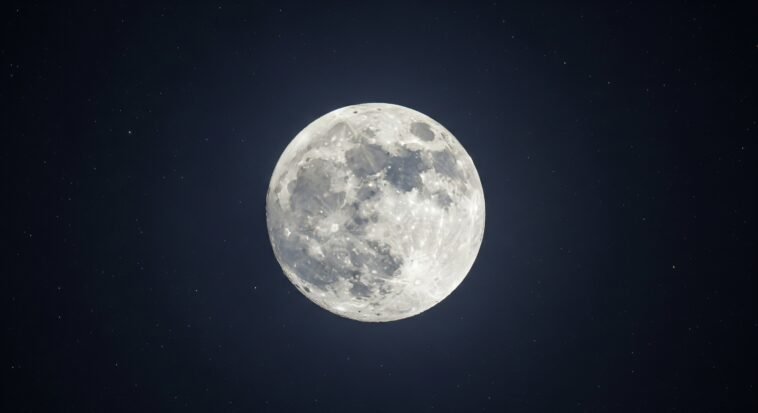
Back in the Cold War, things got weird. Like, “let’s nuke the Moon” weird.
In the late 1950s, the U.S. launched Project A119—a secret plan to blow up part of the Moon with a nuclear bomb.
Why? To flex on the Soviet Union and show off tech power during the space race.
This article breaks down why the plan was made, the science behind it, and why it (thankfully) never happened.
It’s a wild peek into how far countries were willing to go to win—even if it meant messing with the Moon.
The Cold War Backdrop: Fear, Sputnik, and the Space Race Escalation
To get why the U.S. even thought about blowing up the Moon, you’ve gotta rewind to the late 1950s—peak Cold War chaos.
The U.S. and the Soviet Union weren’t just arguing politics; they were deep in an arms race, proxy wars, and a full-on tech flex battle.
Then boom—October 4, 1957. The Soviets launched Sputnik 1, the first satellite ever.
It was small and beeped a lot, but it hit hard.
Americans freaked out. If the Soviets could launch stuff into space, what was stopping them from launching nukes across the ocean?
Suddenly, space wasn’t about science—it was about survival. The Space Race was now a key part of the Cold War, and the U.S. was desperate to catch up.
Every Soviet win—like Yuri Gagarin becoming the first man in space—cranked up U.S. pressure.
Leaders wanted big, bold moves to prove America still ran the show. And that’s how wild ideas like nuking the Moon got put on the table.
Not science fiction—just Cold War logic on steroids.

Project A119: The Genesis of a Lunar Detonation
So, how did we get from “let’s win the space race” to “let’s nuke the Moon”? Enter Project A119—a top-secret plan cooked up by the U.S. Air Force in 1958.
The goal? Two things:
A Show of Force
This was mostly about flexing. The idea was to set off a nuclear bomb on the Moon—big enough to be seen from Earth.
The point wasn’t to do damage (the Moon would’ve survived), but to show the world the U.S. could reach space and blow stuff up there.
It was meant to scare the Soviets and make Americans feel like they were back on top.
Scientific inquiry
Sure, there was a science angle—but it definitely came second. Here’s what they hoped to learn:
- Moon dirt: Blow up part of the surface, study the stuff that flies off, and maybe figure out what the Moon’s made of.
- Moonquakes: Use the explosion to send seismic waves through the Moon and study its insides—like a giant ultrasound, but way more dramatic.
- Dust in space: Watch how the dust cloud moves in low gravity. Could be useful for planning future Moon landings.
The Minds Behind the Madness (and Method)
To pull off Project A119, the U.S. Air Force teamed up with the Armour Research Foundation (ARF) at Illinois Tech.
The crew included some big brains—one of whom would later become a science legend.
Dr. Leonard Reiffel:
He led the project. His job? Figure out if a nuke on the Moon was even possible and if it could teach us anything useful. Spoiler: He later became a big name in space science.
Carl Sagan (Yes, that Carl Sagan):
Back then, he was just a young grad student.
His task? Do the math to figure out how big the dust cloud would be—and if people on Earth could actually see it. No pressure.
Later, he’d become one of the world’s most famous science nerds and a voice for peace.
What they worked on:
The bomb
They chose a small fission bomb (like Hiroshima’s), not a giant hydrogen one.
Just enough bang to create a visible cloud—without wrecking the Moon or sending radioactive dust into space forever.
The rocket
The plan was to strap the bomb to a modified ICBM and send it to the Moon.
It’d blow up right on impact—or just above the surface.
The visibility math
Sagan’s big task: make sure the explosion could be seen from Earth.
He calculated the best time to detonate (during a new moon, when it’s dark) and how much dust was needed to make the “we’re here” message loud and clear.

The Ethical and Practical Roadblocks
In the end, nuking the Moon didn’t happen. Here’s why the plan died in early 1959—despite all the Cold War hype:
Ethical concerns
Sure, the Cold War wasn’t exactly an age of thoughtful decision-making—but a few scientists did raise red flags.
Even Carl Sagan, who worked on the math, later said nuking the Moon felt wrong.
Blowing up a chunk of the Moon’s surface for clout? Not a great legacy.
Risk of failure and public backlash
This was the biggest deal-breaker. Too much could go sideways:
- The rocket could crash back to Earth—with a nuke on board.
- It could miss the Moon and just float around in space like a radioactive time bomb.
- The explosion might not even be visible. That’s not “show of force”—that’s “expensive fail.”
Basically, one mistake = global disaster or international embarrassment.
Contamination and fallout concerns
Even though the blast was supposed to stay on the Moon, people worried about radioactive stuff getting knocked into space and eventually drifting back to Earth.
Not super likely, but risky enough to freak people out.
Strategic shift focus
Around the same time, the U.S. started thinking bigger.
Instead of blowing stuff up in space, why not send people there? NASA began focusing on real missions—like Project Apollo.
Putting humans on the Moon was way cooler (and smarter) than nuking it.
Cost and resource allocation
Launching a nuke to the Moon costs a lot.
And with so many new space projects kicking off, the government decided to put its money where it mattered—long-term wins, not one-off explosions.
The Secrecy and Revelation
Project A119 stayed under wraps for decades. Total Cold War secret.
No one outside the loop knew the U.S. seriously considered nuking the Moon—until the early 1990s.
Once some old documents got declassified, the truth came out.
Leonard Reiffel, the guy in charge, finally talked about it. He confirmed the whole thing: yes, it was real, and yes, it was about showing off U.S. power.
Declassified files also showed Carl Sagan was involved—his name even popped up in an old fellowship application linked to the project.
When the story broke, it hit hard. People realized how wild the Cold War mindset really was—so much fear, so much pressure, that nuking the Moon somehow seemed like a good idea.
Lessons from a Near Miss
This story isn’t just some wild “what if” from the Cold War.
It actually teaches us a lot—about science, power, and what happens when fear drives big decisions.
1. Politics can hijack science
Project A119 shows how global rivalry can push scientists into weird territory. It wasn’t about curiosity—it was about one-upping the Soviets.
2. Big dreams need boundaries
Sure, ambition got us to space. But thankfully, someone hit pause before we blew up the Moon for bragging rights. Sometimes, caution saves the day.
3. Winning isn’t everything
The U.S. was so focused on “winning” that they almost risked wrecking the Moon’s surface and starting a whole new space-based arms race. Chill, America.
4. We need space rules
Back then, there were no real laws about what you could or couldn’t do in space. That’s why stuff like the Outer Space Treaty (1967) matters—it banned nukes in space and helped keep things peaceful up there.

Final Thought: Glad We Didn’t Blow Up the Moon
The Moon’s still up there, cratered but untouched by nukes—and that’s a win for common sense.
Project A119 was never really about science.
It was fear, ego, and Cold War flexing disguised as research.
Luckily, smarter heads saw the risks, raised ethical red flags, and shut it down before things got out of hand.
Now, as we plan new Moon missions and talk about going to Mars, this whole story is a big reminder: just because something’s possible doesn’t mean it’s smart.
The Moon doesn’t need explosions—it needs exploration.



